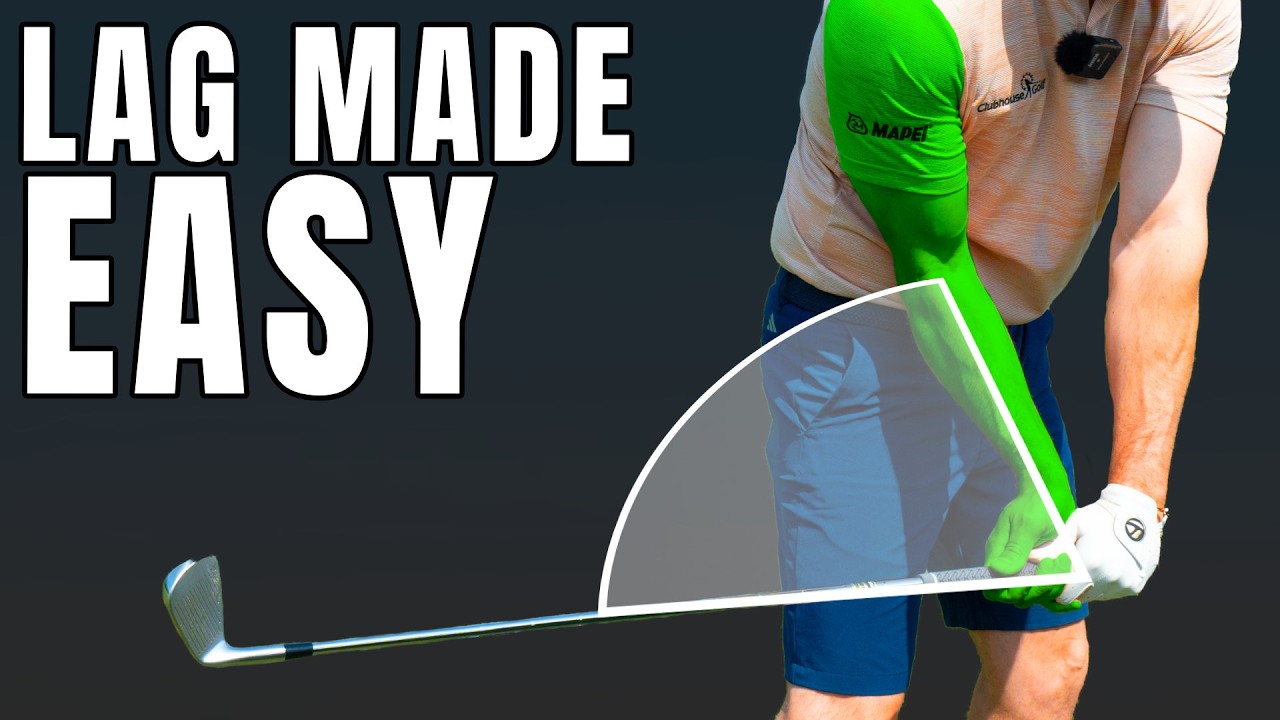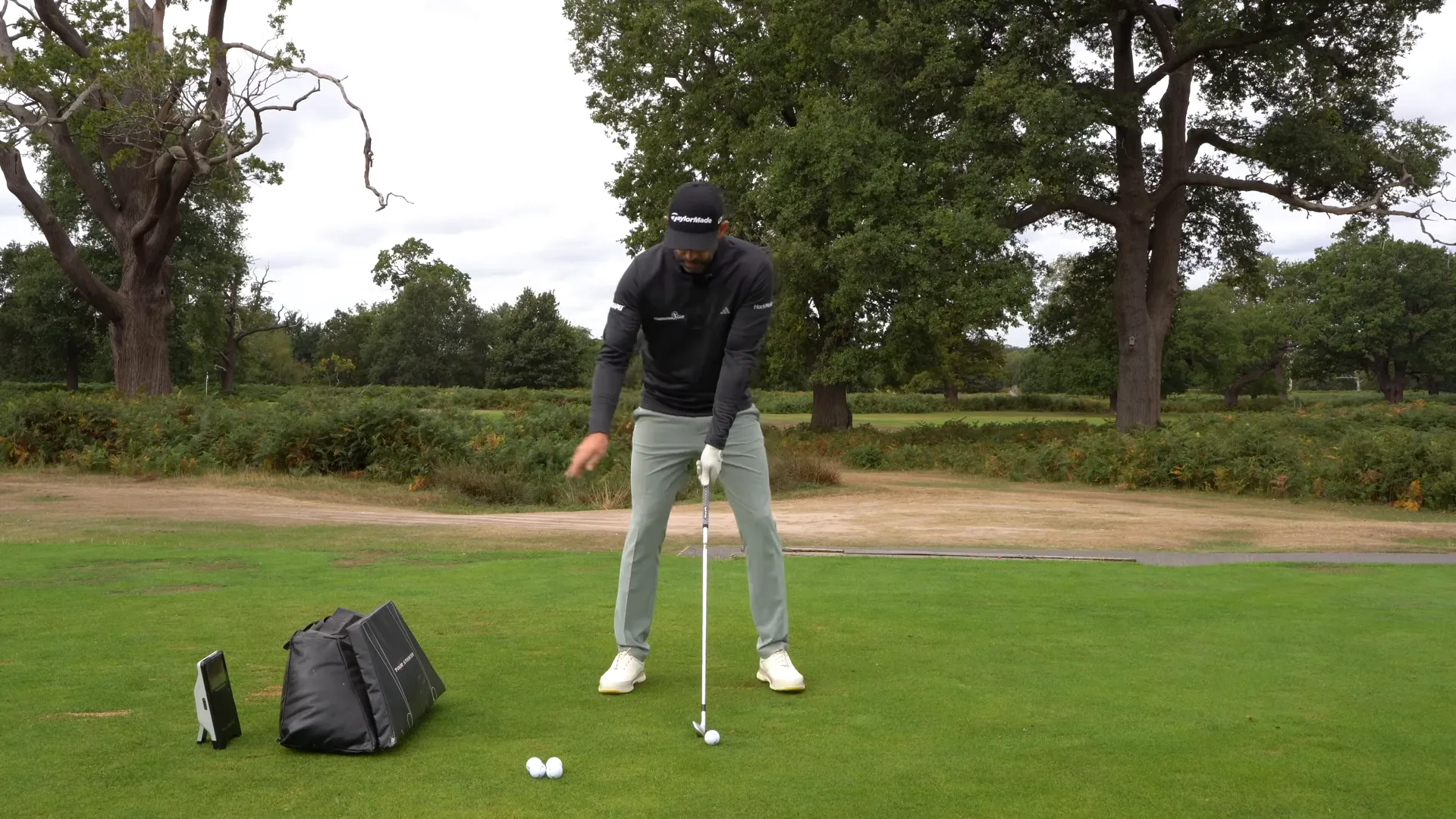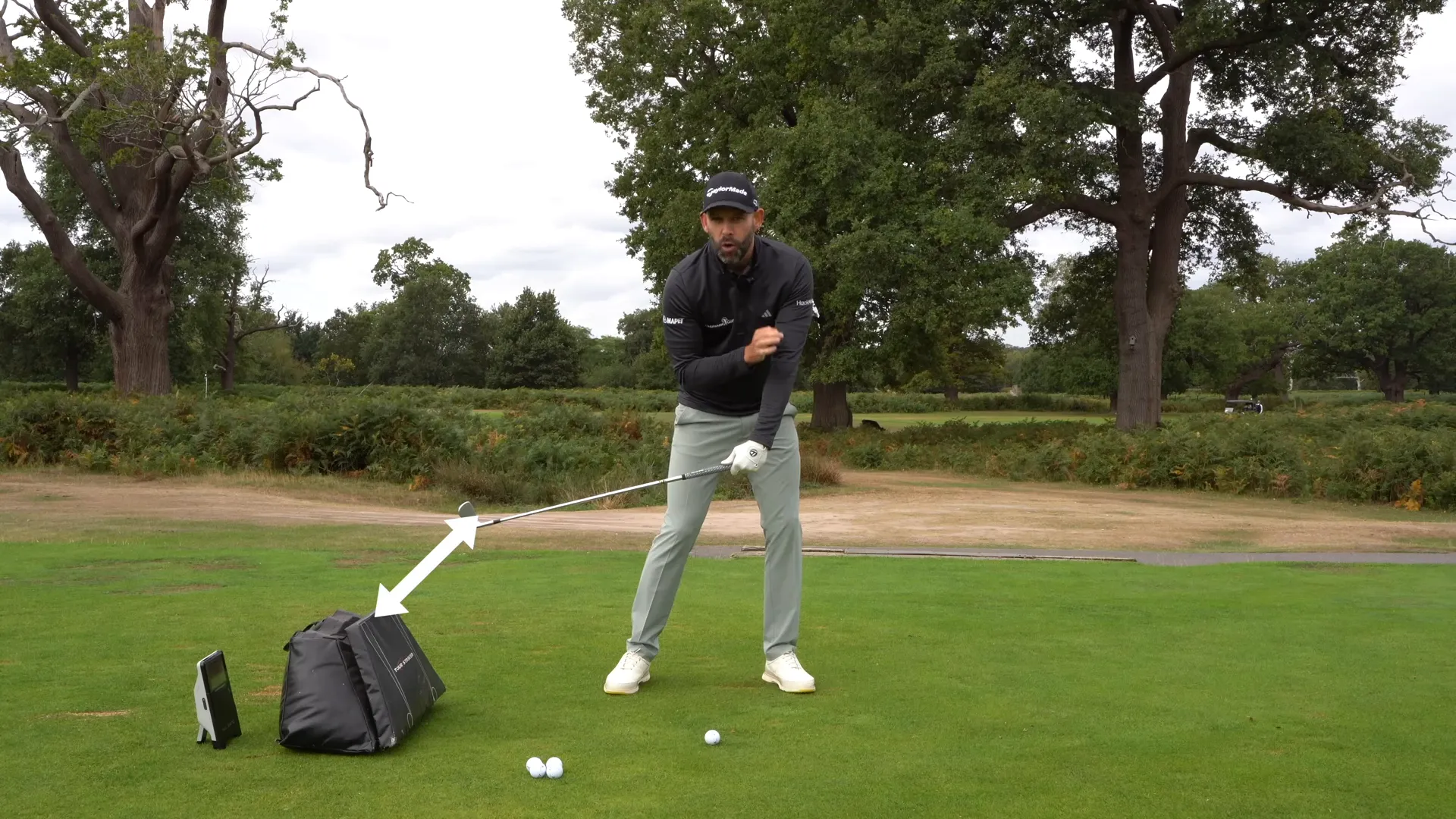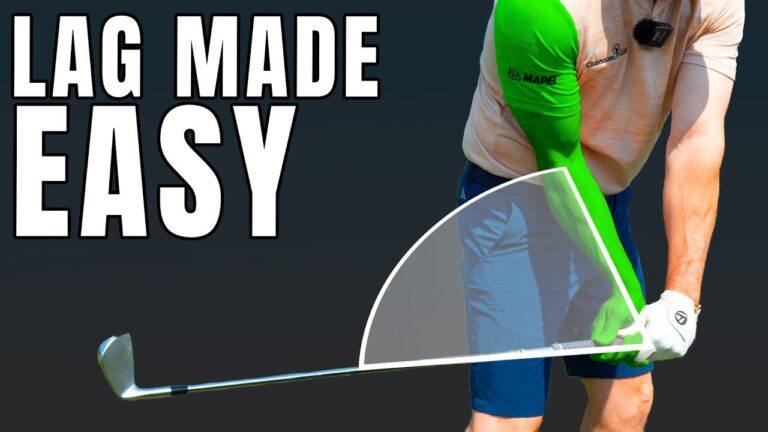

Table of Contents
- Step 1: Set Up an Impact Reference
- Step 2: Start the Takeaway with the Trail Hand
- Step 3: Add Both Hands and Foot Movement
- Step 4: Understand Why Forcing Lag Fails
- Step 5: Practice the Golf Sequence
- Troubleshooting: Common Issues
- Step 6: Measure Progress in Your Golf Swing
- Step 7: Putting It Together on the Course
- FAQ: Common Questions
- Conclusion: Trust the Sequence
Step 1: Set Up an Impact Reference
Start your routine by establishing a visual and tactile reference using an impact bag, towel, or a golf bag placed a 7-iron length from your address position. This tool helps you discern if your club is traveling “wide to narrower” during your swing, essential for solid ball-turf contact.
Watch how professional golfers use such a setup: during the takeaway, they may graze the reference. But on the downswing, you’ll notice their swing narrows as they shift weight forward, leading to forward shaft lean and optimized impact.
Step 2: Start the Takeaway with the Trail Hand
This initial drill focuses on the correct early movement. Place your trail hand on your chest or shoulder, initiating the takeaway with a slight push back and down. This encourages a wide arc and ensures you gently clip your reference at the top of your backswing.
As you progress, incorporate a shift in weight towards the target before completing the backswing. This creates lag, letting the club naturally trail behind as your body transitions forward.

Step 3: Add Both Hands and Foot Movement
Enhance the sequence by using both hands and adding foot movement. Begin with your feet together and practice transferring weight with a step, syncing your body’s motion for a smooth, natural swing. Perform the drill without a ball first for fluidity in your swing mechanics.
- Start with feet together and club in front.
- Step with the lead foot as you initiate takeaway.
- Complete the weight transfer and swing through with the club landing ahead of its starting point.
Step 4: Understand Why Forcing Lag Fails
Attempting to create lag through forced angles disrupts your swing’s natural rhythm and can lead to inconsistent strikes. When you pull the club too close, your body compensates by aggressively using the wrists, shifting weight back, and weakening contact. Adopt a sequence that evolves naturally through body rotation and weight shift.
Step 5: Practice the Golf Sequence
Follow this practice plan to hone the right technique:
- Daily Warm-Up (5-10 min): 20 slow reps of the trail-hand push drill to get familiar with shoulder-driven takeaway.
- Sequencing Reps (10-15 min): Complete 30 reps of the feet-together drill without a ball to focus on flow.
- Ball Contact Practice (15-30 min): Short swings with a reference point for feedback on sequence and impact.
- Progression: Increase swing length and club selection as comfort grows.
Troubleshooting: Common Issues
Encountering problems? Here are quick fixes:
- Too Wide at Impact: Minimize swing length and focus on shoulder push drills.
- Weak Ball Flight: Check grip pressure, ensuring a light hold that promotes weight-led downswing.
- Narrow Early in Backswing: Reinforce wide takeaway with shoulder movement.
- Lost Flow in Swing: Return to sequence drills and focus on rhythm over precision.
Step 6: Measure Progress in Your Golf Swing
Recognize improvements through consistent feedback:
- Maintain forward shaft lean at impact
- Achieve deeper divots starting after the ball
- Notice sharper impact sounds and compressed strikes
- Observe tighter dispersion and consistent distance in irons
Step 7: Putting It Together on the Course
Keep swing thoughts minimal during play:
- Trail Shoulder Push: Cue for takeaway initiation.
- Shift and Step: Visualize moving onto the lead leg.
- Trust Lag: Resist forcing angles, let the movement flow.
FAQ: Common Questions
Q: What is lag in golf?
A: Lag is the angle between the club shaft and lead arm during downswing, arising from proper body sequencing. It helps compress the ball for solid impact.
Q: How can I tell if I’m starting too narrow?
A: Feeling cramped at the backswing often indicates narrow beginnings. If your club clips the reference on both back and downswing, adjust setup for a wide start, narrow finish.
Q: Can these drills be done indoors?
A: Yes, initial reps without a ball work well indoors, allowing focus on movement.
Conclusion: Trust the Sequence
Remember, forced lag seldom works. Instead, train your body to naturally follow a sequence by beginning with a trail-shoulder push and progressive weight shifts, leading to effortless, lag-filled swings. Continue practicing with a focus on fluidity, improving your game substantially over time. For deeper insights and tailored practice plans, explore Chris Ryan Golf. Stay committed, trust the process, and delight in the strike of pure ball contact.


0 Comments